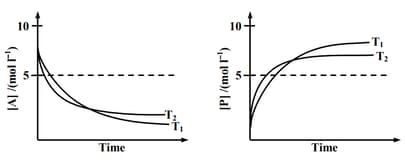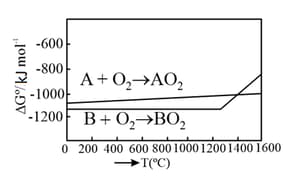What is the condition for non-spontaneous exothermic reaction?
Important Questions on Chemical Thermodynamics and Energetics
For the reaction,
The value of of (aq) shall be given by, (if )

If , the correct statement(s) is (are)
(Assume are independent of temperature and ratio of is greater than . Here H, S , G and K are enthalpy, entropy, Gibbs energy and equilibrium constant, respectively.)
The surface of copper gets tarnished by the formation of copper oxide. gas was passed to prevent the oxide formation during heating of copper at 1250 K. However, the gas contains 1 mole % of water vapour as impurity. The water vapour oxidises copper as per the reaction given below:
Is the minimum partial pressure of (in bar) needed to prevent the oxidation at . The magnitude of value of is ____.
(Given: total pressure = 1 bar, R (universal gas constant) are mutually immiscible.
At
)
Round off the answer up to the nearest integer.
Products are favoured in a chemical reaction taking place at a constant temperature and pressure. Consider the following statements:
(i) The change in Gibbs energy for the reaction is negative.
(ii) The total change in Gibbs energy for the reaction and the surroundings is negative.
(iii) The change in entropy for the reaction is positive.
(iv) The total change in entropy for the reaction and the surroundings is positive.
The statements which are ALWAYS true are:-

[Given: ]
and are, respectively, and at 298 K. The equilibrium constant for the reaction at 298 k is:
For the reaction at ,
If we start the reaction in a closed container at with millimoles of , the amount of is the equilibrium mixture is ________ millimoles. (Round off to the Nearest Integer).
The standard free energy of the formation of is at . What is the standard free energy of the formation of at ?

